The jade plant, also known as the money plant or lucky plant, is a widely used succulent houseplant.
Its aesthetic appeal, easy maintenance, and numerous benefits make it a favorite choice for both experienced gardeners and beginners alike.
In this article, we will explore the fascinating benefits of having a jade plant in your living space.
Jade Plants in a Nutshell
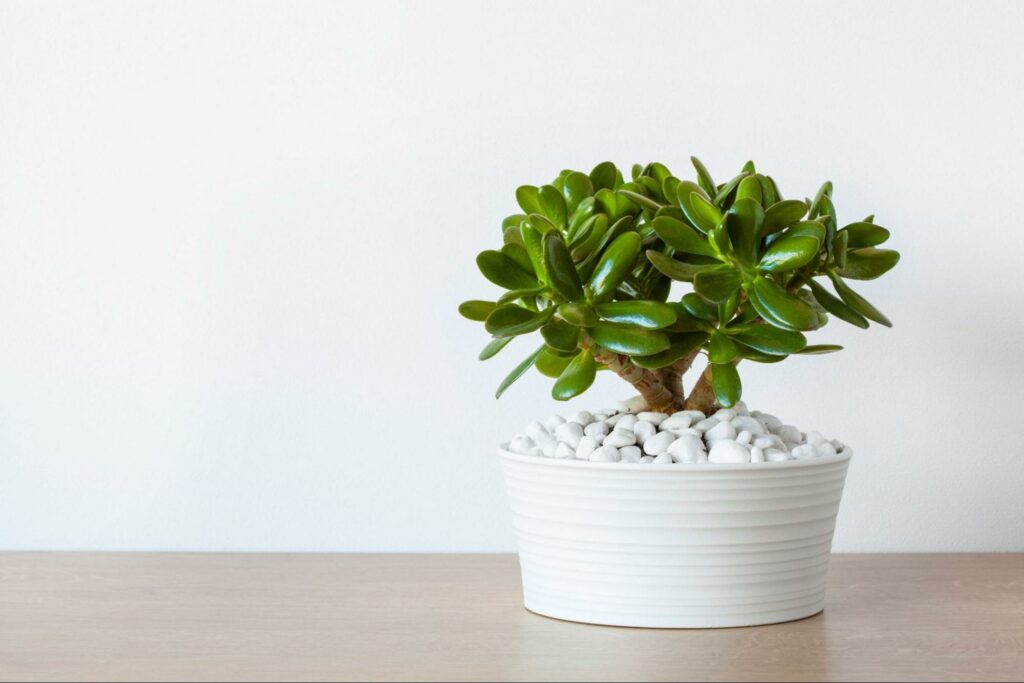

Jade plants, scientifically known as Crassula ovata, are perennial succulents with oval-shaped leaves that have a vibrant green color. They typically grow along thick, sturdy stems, reaching a height of up to 3 feet or 90 centimeters.
The leaves of the jade plant have a glossy texture, and their density gives the plant an elegant and compact appearance.
The plant belongs to the Crassulaceae family and is native to South Africa.
As a succulent, the jade plant has the remarkable ability to store water in its leaves and stems, making it well-adapted to dry conditions.
Aesthetic Appeal and Easy Maintenance
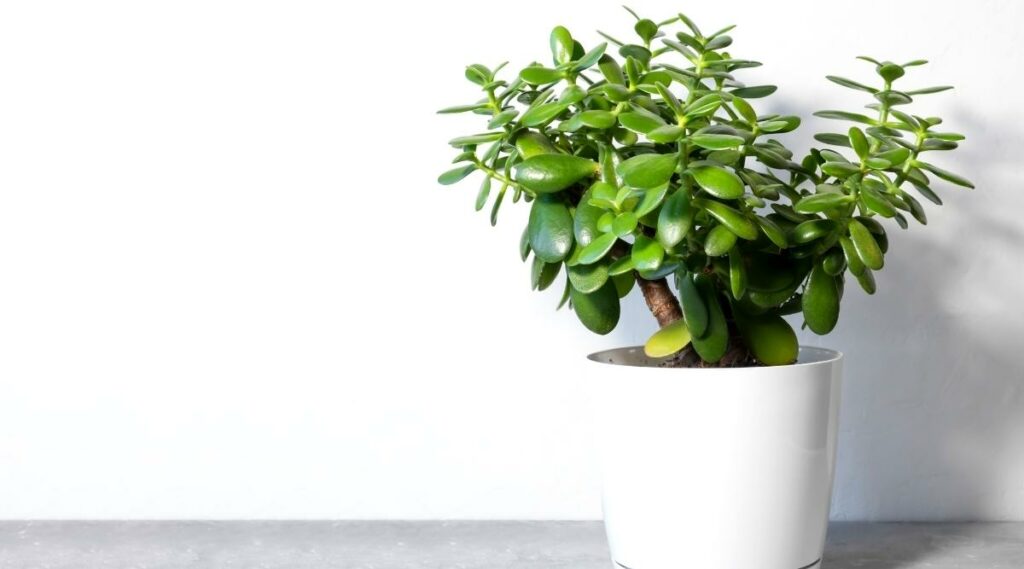


- Unique Appearance: The jade plant boasts a distinctive visual appeal with Its vibrant green, fleshy, oval-shaped leaves. Its glossy texture gives it a lush and attractive appearance, making it stand out among other houseplants.
- Elegant Form: With thick, sturdy stems and densely arranged leaves, the jade plant exhibits an elegant and compact form.
This well-defined structure adds a touch of sophistication to any indoor setting, making it an ideal decorative piece for homes, offices, and various interior spaces.
- Versatile Placement: The jade plant’s adaptability to different light conditions makes it a versatile choice for indoor locations.
While it thrives in bright, indirect sunlight, it can tolerate lower light levels, making it suitable for spaces with varying degrees of natural light.
- Minimal Watering Requirements: One of the jade plant’s remarkable features is its ability to store water in its succulent leaves.
Because of this, the jade plant doesn’t demand frequent watering and can survive in arid conditions, contributing to its low-maintenance nature.
Allowing the soil to dry out slightly between waterings is sufficient to maintain its health and prevent overwatering, which can be detrimental to the plant.
- Low-Fuss Fertilization: The jade plant doesn’t require frequent fertilization.
Applying a balanced, water-soluble fertilizer every six to eight weeks during the growing season is adequate to provide essential nutrients for its healthy development.
Air Purification Abilities



Apart from enhancing the visual appeal of your home, the jade plant also provides significant health benefits.
The NASA Clean Air Study and the American Chemical Society have shown that certain indoor plants, including the jade plant, have air-purifying properties.
This plant can help remove harmful pollutants and toxins from the air, contributing to improved indoor air quality.
Specifically, the jade plant has been found to absorb pollutants like acetone, formaldehyde, benzene, and xylene, which are commonly found in household products and building materials.
Stress Reduction and Mental Health Benefits
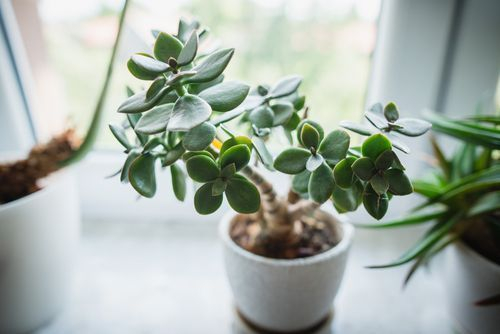

Beyond its air-purifying abilities, the jade plant also offers mental health benefits. Spending time around greenery, such as the jade plant, has been proven to reduce stress and anxiety.
The presence of this soothing houseplant can promote a sense of calm and tranquility, making it an excellent addition to areas where you relax or work.
Additionally, caring for a living organism, like a jade plant, can be rewarding and therapeutic. The act of nurturing and watching it grow can provide a sense of fulfillment and joy, promoting positive mental well-being.
Feng Shui Symbolism
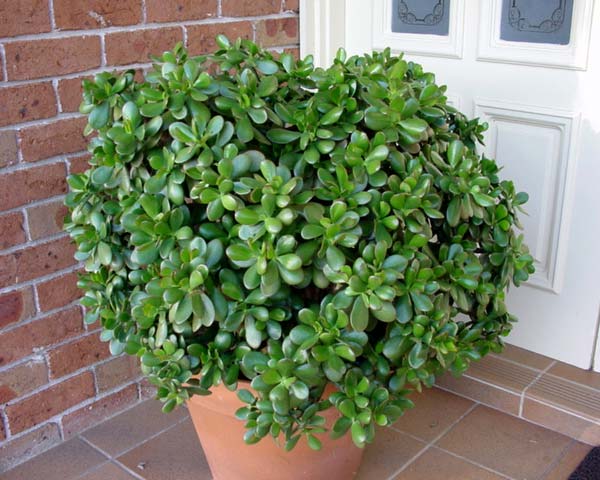

In Feng Shui, the jade plant is considered a powerful symbol of prosperity, good luck, and positive energy.
The jade plant’s round, coin-shaped leaves are believed to represent wealth and abundance, making it an auspicious choice for attracting financial well-being.
Placing a jade plant in the southeastern corner of your home or office is thought to enhance prosperity and financial growth, as this area is associated with wealth in Feng Shui.
Additionally, positioning the jade plant near the entrance not only adds a calming and nurturing element but is also believed to invite positive energy or “chi” into the environment.
Healing Properties
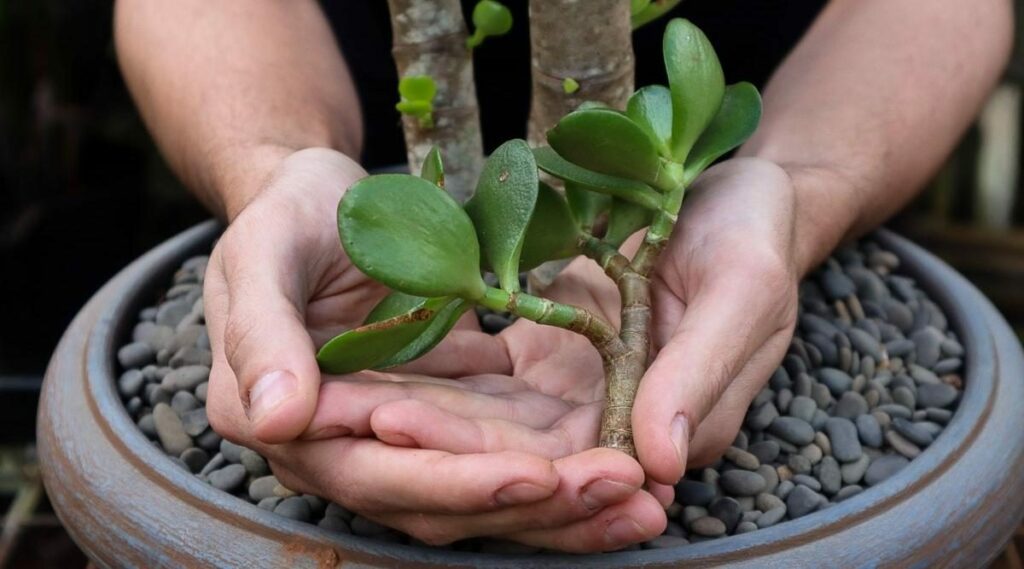

The jade plant has been used in traditional medicine in various regions, such as China and South Africa. Its uses include treating wounds, indigestion, diarrhea, nausea, corn, and warts.
Please note the medicinal applications mentioned above are primarily associated with traditional home remedies. It is strongly advised to consult with a qualified healthcare professional before considering the jade plant for any medicinal purposes.
Easy Propagation and Sharing
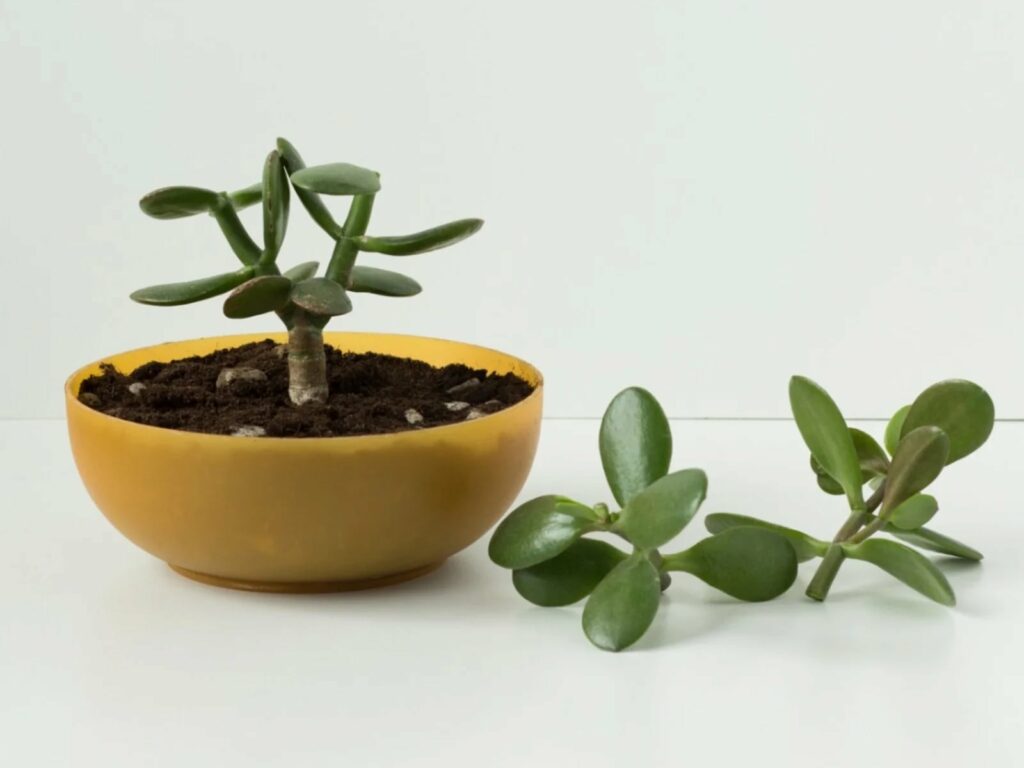

One of the most enjoyable aspects of having a jade plant is the ease with which it can be propagated and shared with others.
Sharing jade plants with friends and family is a delightful way to spread the joy of gardening. In countries such as China and Japan, giving a jade plant as a gift is considered a gesture of friendship, goodwill, and prosperity.
Offering a jade plant to a loved one symbolizes a wish for their well-being and success, making it a thoughtful and meaningful present.
How to Propagate Jade Plant
Propagation of the jade plant is typically accomplished through stem cuttings:
- Select a Healthy Stem: Choose a healthy stem from the main jade plant that is at least 3 to 5 inches long and has a few sets of leaves.
- Take a Cutting: Using a sharp, clean knife or scissors, cut the selected stem just below a leaf node, which is the point where the leaves are attached to the stem.
Trim away any lower leaves on the cutting, ensuring that a few leaves remain at the top.
- Allow the Cutting to Callus: Let the cut end of the stem dry and callus over for a day or two. This helps prevent rotting when it’s planted in the soil.
- Plant the Cutting: After the cut end has become callused, plant the cutting in well-draining soil, such as a cactus or succulent mix.
- Water Sparingly: Water the soil sparingly, allowing it to dry out slightly between waterings. Overwatering can cause the cutting to rot.
- Provide Adequate Light: Place the cutting in a location with bright, indirect sunlight. Avoid direct sun exposure, as this may scorch the leaves.
- Monitor and Wait: With proper care, the cutting will start to develop roots and establish itself as a new jade plant. This process may take a few weeks to a couple of months.



